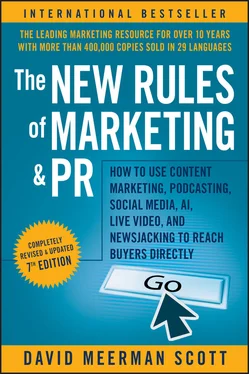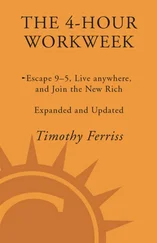“And you know, since probably very few people are encouraging you to grow your hair out, you’re probably not celebrating it with your mom or with your buddies or your sister. So we have some fun by celebrating on the blog with ‘Hair Whip Wednesdays’ and ‘Famous Long Hair Fridays.’ You know, it’s a club and it’s a community. We should celebrate it. So we do that with our Celebrate Style content.”
Many of the new visitors to the community come through search. As Healy and Barto pored through their stats, they realized that people were coming for some of their more unusual posts. “We wrote a blog post about a year and a half ago called ‘The Uncomfortable Truth about Awkward-Stage Hair’ that documented that phase when guys start to grow out their hair between about four, five, six months until about a year and a half,” Healy says. “Man, it just looks bad. There’s nothing you can do about it. But that’s part of why long hair is a minority among men, because you have to get through that awkward phase. It turns out a lot of guys are searching for information on awkward-stage hair: how to deal with it, how to accelerate it, how to make it go faster. Now, if you Google ‘awkward-stage hair,’ we show up in the number one position.”
While the blog posts are the primary content on the site, Healy and Barto also publish videos, record podcasts, and use photography. The content drives people to where they can get updates via email and become part of the community of Longhairs.
The flagship product of the Longhairs community is Hair Ties for Guys. “That was the original idea before The Longhairs even existed or was an idea,” Healy says. “We were thinking ‘Hair Ties for Guys’—man, we need that. It tells you what it is. It’s sticky. You’re not going to forget that!”
Once the community launched, they started work on Hair Ties for Guys. The process involved a great deal of product testing and searching for manufacturing sources, but after more than a year they released the first offerings. Today they have six collections of Hair Ties for Guys.
“We have some fun names, including the Outdoorsmen, the Kokomos, and the Up All Nighters,” Healy says. “Instead of what you would find in the women’s hair care aisle (pastel colors and maybe some more feminine designs with flowers), we do rocket launchers and shotgun shells, camouflage, surfboards, fishing rods, and stuff that guys are into. And guys love them. The reach has been extraordinary. We have now shipped Hair Ties for Guys to 47 states in the U.S. and 36 countries around the world.”
Now that the Hair Ties for Guys product is doing well, Healy says he is looking at new products to offer the community.
The potential market for his products is huge. Healy estimates that men with long hair make up somewhere between 3 and 5 percent of the population of the United States. If you also include men who live in other countries and have disposable income, the target market is in the tens of millions. Guys with long hair is a distinct buyer persona that had been ignored by nearly all other companies.
As Healy and Barto say in their introductory video, “In the end, long hair is about more than just hair itself. It’s commitment. It’s identity. It’s a lifestyle. It’s all of those things and more. So even if you’re not a guy with long hair, if you’re a mother of a boy with long hair, if you’re a wife or a girlfriend of a man with long hair, if you’re a few months removed from your last haircut and you’re ready to press on, if you have an ailment and you’re not capable of growing hair, The Longhairs are here for you. Because long hair lives in the heart.”
Content sells products to guys with long hair. A well-written blog targeting a specific audience with a well-defined buyer persona has the power to sell your product or service too. It’s about tapping into a shared challenge and rallying the community around it.
The new publishing model on the web is not about hype and spin and messages. It is about delivering content when and where it is needed and, in the process, branding you or your organization as a leader. When you understand your audience—those people who will become your buyers (or those who will join, donate, subscribe, apply, volunteer, or vote)—you can craft an editorial and content strategy just for them. What works is a focus on your buyers and their problems. What fails is an egocentric display of your products and services.
To implement a successful strategy, think like a publisher. Marketers at the organizations successfully using the new rules recognize that they are now purveyors of information, and they manage content as a valuable asset with the same care that a publishing company does. One of the most important things that publishers do is start with a content strategy and then focus on the mechanics and design of delivering that content. Publishers carefully identify and define target audiences and consider what content is required to meet their needs. Publishers consider all of the following questions: Who are my readers? How do I reach them? What are their motivations? What are the problems I can help them solve? How can I entertain them and inform them at the same time? What content will compel them to purchase what I have to offer? To be successful, you need to consider these same questions.
Staying Connected with Members and the Community
As the demographics of the United States have changed over the past several decades, many mainline church organizations have struggled to attract and maintain members. Like any business or nonprofit, the churches that succeed are those whose leaders understand the problems buyers (here: churchgoers) face and use the power of publishing valuable information to reach them directly. Trinity Cathedral 7in Cleveland is a place where ancient church practice has blended with new patterns of social interaction to build a vibrant community both online and offline. Trinity Cathedral is a historic landmark and home to a vibrant, inclusive congregation in the heart of a city struggling to revitalize after decades of decline in manufacturing jobs. The Very Rev. Tracey Lind, dean of Trinity Cathedral, leads the effort.
“The official way you count attendance or membership in the Episcopal Church is to count average Sunday attendance,” Lind says. “For a long time, I and a group of my colleagues have been saying that’s not an accurate measure of the work we’re doing. In fact, our vitality would be better measured by average weekly touch.” To touch people regularly outside of Sunday services, Lind publishes an email newsletter, her own blog, 8audio podcasts, a Facebook page, and a Twitter feed. “Reality is that most people don’t go to church every week anymore,” she says. “That’s just a reality of life. My attitude is that you can fight it, or you can be a part of it.”
Lind’s publishing efforts help create a virtual community within the congregation. Trinity Cathedral employs a full-time communications person and also relies on Rebecca Wilson and Jim Naughton of Canticle Communications (a firm that serves mainly church organizations) to help with web design and content publishing efforts. “We do everything as if we are running a web business to try to attract people to us,” Lind says. “The reality is I’m not going to get everybody to church every week. If you can’t get to church on Sunday, you can listen to the service on a podcast or you can read it on my blog. If you’re teaching our kids or you’re singing in the choir or doing something else at that hour, you can listen to it on a podcast. What we find is we’re reaching huge communities of people [with] our podcasting. People are listening to us all over the globe. I get emails from folks in Australia or Germany, thanking me for a sermon that I preached and wanting to engage.”
Читать дальше












